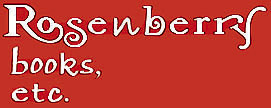I would like to give a simple gift to those who publish periodicals and books on a shoestring. It is a gift that some larger publishers could make good use of as well. This marvelous giftie may not only save you money, but it will also greatly improve your presentation. What a deal!
Whenever I send an email or write a business letter, I write short “block paragraphs.” Block paragraphs are not indented but are separated from each other by empty lines, as you see in this blog post.
I limit the contents of each block to only a sentence or two in order to assert particulars with the aggressiveness of a bullet-point list. I am trying to keep each thought simple and discrete in order to help a racing or distracted reader to skim effectively. Block paragraphs are useful for writing destined for the speed reader: online text, advertising and some periodicals.
On the printed page, however, where ideas and stories are presented to readers who are not expected to run off at any moment, flow and cohesion are the goal of typography. Empty lines between related paragraphs become disruptive and even confusing. Empty lines should be reserved for separating sections within chapters, essays or stories where there is a marked change of subject or scene.
Books and essays with prose and poetic extracts (long quoted passages set off from the main text by spacing or other typographical variation) will be especially aided by removing empty lines within the main text and indenting paragraphs instead. The main text will then hold together and allow the clearer distinction of the quoted poetry and prose. (By the way, short quotes need only be identified with quotation marks and remain integrated with the main text. Substantial extracts, however, are set off in a block separated from the main text and do not need quotation marks.)
Think also of how much clearer the elements of a haibun become when the prose paragraphs with in it are a united block. When the haibun’s prose is interrupted by the same empty lines that may separate the prose from the haiku, the effect is choppy and can be confusing. This is especially true when multiple pieces are on the same page. Let what belongs together hang together!
In written forms other than in emails, business letters and advertising, a paragraph is meant to unite, in a cohesive group, a number of sentences that flow together to express an idea. Unfortunately the email/advertising habit has infected essays, short stories, and even whole books. Text that belongs together in a single paragraph is all too often broken down into blocks of a sentence or two. Subjects that belong together in a flow of connected paragraphs are vivisected into disparate parts floating in a pool of empty lines.
Most publications contain some prose. Even poetry journals and books contain prefaces, forewords, essays, letters to the editor … and haibun. In some publications, whole pages of space will be saved simply by a more generous concept of paragraphing, and by removing all those extraneous and disruptive empty lines separating every paragraph. A modest indent will do the job much more elegantly. Enjoy the economy of space and the flow of ideas!
“Typography Tips for Poets,” a column in Moonset Literary Review, was written by
Diane Katz, book designer, Rosenberry Books
Diane can be reached at 800.723.0336 diane@rosenberrybooks.com



